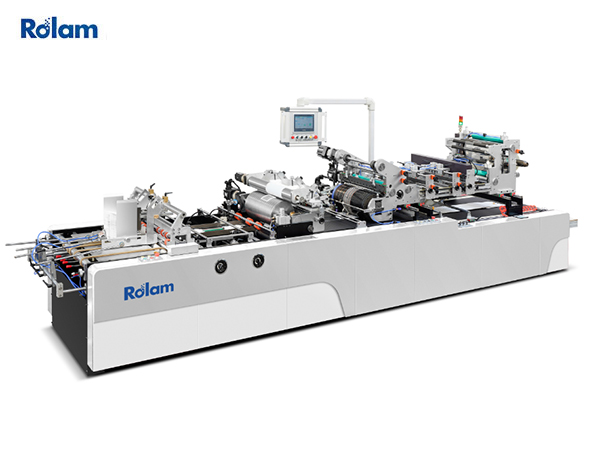In the packaging production line, the accurate patching position of window patching machines is of vital importance for the overall quality of product packaging. However, situations where the patching position deviates are inevitable. There are two main methods to address this issue: manual adjustment and automatic adjustment by the machine, and these two methods have distinct characteristics.
Manual Adjustment
Manual adjustment requires experienced technicians to operate. When a deviation in the patching position is detected, the technician first carefully observes the current state of the machine and the deviation of the patch. Then, using tools such as wrenches and gauges, they make adjustments to the relevant mechanical parts. For example, they may adjust the position of the paper - feeding mechanism to ensure that the cardboard is accurately positioned during the patching process. They also need to fine - tune the alignment of the film - applying mechanism to make the film stick to the correct position on the cardboard window. This process often requires multiple trial - and - error adjustments. Each adjustment is followed by a test run of the machine to check if the patching position has been corrected. The technician's judgment and experience play a key role in this process. A skilled technician can usually make relatively accurate adjustments, but it is also highly likely to be affected by human fatigue and subjective factors.
Automatic Adjustment
Automatic adjustment is realized through the built - in intelligent control system of the window patching machine. The machine is equipped with a series of high - precision sensors, such as position sensors and vision sensors. When the position deviation occurs, the sensors immediately detect the abnormal position data and transmit it to the control system. The control system then quickly analyzes the data and calculates the required adjustment parameters. Subsequently, the actuator in the machine, such as a servo - motor - driven adjustment mechanism, automatically makes corresponding adjustments to the relevant components. For instance, the servo - motor can precisely control the movement of the film - cutting and applying parts to correct the patching position. This process is completed automatically without the need for direct human intervention. The entire adjustment process is fast and highly accurate, and it can continuously monitor the patching position during the production process to ensure that the deviation is always within the allowable range.
Efficiency
Manual adjustment is generally time - consuming. Since each adjustment requires the technician to operate step by step and test after each adjustment, it may take a long time to finally correct the patching position accurately, especially when dealing with complex deviation problems. This can lead to significant production interruptions, which is not conducive to the continuous operation of the production line.
Automatic adjustment, on the other hand, is extremely efficient. Once the deviation is detected, the machine can complete the entire adjustment process within a very short time, usually within a few seconds or less. This minimizes the impact on production and ensures the high - speed operation of the production line. For large - scale packaging production enterprises, the high - efficiency automatic adjustment can greatly improve production efficiency and reduce production costs.
Precision
The precision of manual adjustment depends largely on the technician's skill level. Although an experienced technician can achieve a certain degree of precision, there is still room for error. Slight inaccuracies in the adjustment of the mechanical parts may lead to residual deviations in the patching position. In addition, human - induced errors, such as misjudgment of the adjustment amount, can also occur.
Automatic adjustment, relying on advanced sensor technology and precise control algorithms, can achieve very high precision. The sensors can accurately detect even tiny position deviations, and the control system can calculate and execute adjustments with sub - millimeter or even higher - precision levels. This ensures that the patching position is always highly accurate, which is crucial for high - end product packaging that requires strict appearance quality.
Cost
Manual adjustment has relatively low initial investment. Only basic tools and the labor of technicians are needed. However, considering the long - term cost, the time - consuming adjustment process may cause production delays, resulting in losses of production output and potential orders. In addition, if frequent manual adjustments are required, the labor cost will also increase.
Automatic adjustment, although requiring a large initial investment in high - tech sensors, control systems, and precision actuators, can save costs in the long run. The high - efficiency and high - precision automatic adjustment can reduce production waste and the need for rework due to patching position errors. It also reduces the dependence on a large number of technicians, thereby reducing labor costs in the long - term production process.
In conclusion, when it comes to correcting the deviation of the patching position of window patching machines, manual adjustment and automatic adjustment have their own advantages and disadvantages. Manual adjustment is more flexible and has a lower initial cost, but it is time - consuming and less precise. Automatic adjustment, with its high efficiency, high precision, and long - term cost - effectiveness, is becoming an increasingly popular choice in modern packaging production. As technology continues to develop, the application of automatic adjustment technology in window patching machines will surely become more widespread.




